Author: Malcolm Frazer
The four primary ingredients in beer are water, barley, yeast, and hops, all of which come in numerous varieties that impact the ultimate character of the beer we make. We’ve performed numerous xBmts on water chemistry, compared different malts to each other, and continue to explore the impact of various yeast strains. It’s been a long time coming, over 3 years and 120 xBmts to be exact, but we’re only just getting to our first hop comparison exBEERiment!
Over the last 20 years or so, the hop characteristics preferred by craft beer drinkers seems to have shifted from the earthy, floral, and quaint citrus traits of hops like Cluster and Cascade to the punch-you-in-the-face ripe fruit pungency found in many of today’s most popular varieties including the likes of Galaxy and Mosaic. The Hop Chronicles data for each of these hops aligned rather well with descriptors provided by industry experts, showing Galaxy to have more citrus to Mosaic’s stronger resinous character, though both possessing strong tropical fruit aroma and flavor. Given their current popularity and similar descriptions, I began to wonder just how different these varieties really are and decided to put it to the test!
| PURPOSE |
To evaluate the differences between a beer hopped solely with Galaxy and the same beer hopped only with Mosaic hops.
| METHODS |
Given the nature of the variable being investigated, I was able to avoid a dual-mash brew day and instead made a 10 gallon batch that would be split pre-boil. The recipe I designed was simple enough to allow the hop character to shine.
The Mosaic Galaxy Pale Ale
Recipe Details
| Batch Size | Boil Time | IBU | SRM | Est. OG | Est. FG | ABV |
|---|---|---|---|---|---|---|
| 5.5 gal | 60 min | 54.6 IBUs | 6.0 SRM | 1.054 | 1.012 | 5.6 % |
| Actuals | 1.054 | 1.012 | 5.5 % | |||
Fermentables
| Name | Amount | % |
|---|---|---|
| ESB Pale Ale Malt, Gambrinus | 10.875 lbs | 95.08 |
| Vienna Malt, Avangard | 7 oz | 3.83 |
| William Crisp Crystal Light 45L | 2 oz | 1.09 |
Hops
| Name | Amount | Time | Use | Form | Alpha % |
|---|---|---|---|---|---|
| Galaxy or Mosaic | 15 g | 60 min | Boil | Pellet | 13.5 |
| Galaxy or Mosaic | 30 g | 10 min | Boil | Pellet | 13.5 |
| Galaxy or Mosaic | 28 g | 20 min | Aroma | Pellet | 13.5 |
| Galaxy or Mosaic | 56 g | 3 days | Dry Hop | Pellet | 13.5 |
Yeast
| Name | Lab | Attenuation | Temperature |
|---|---|---|---|
| California Ale (WLP001) | White Labs | 77% | 68°F - 73°F |
Notes
| Water Profile: Ca 69 | Mg 11 | Na 33 | SO4 130 | Cl 45 | HCO3 67 |
Download
| Download this recipe's BeerXML file |
I made a starter with a fresh pack of WLP001 California Ale yeast a couple days prior to brewing.
On brew day, I measured out and milled the grain as the strike water was heating,
When the water had reached the temperature indicated by BeerSmith, I transferred it to my cooler MLT and gently stirred the grains in to hit my target mash temperature.
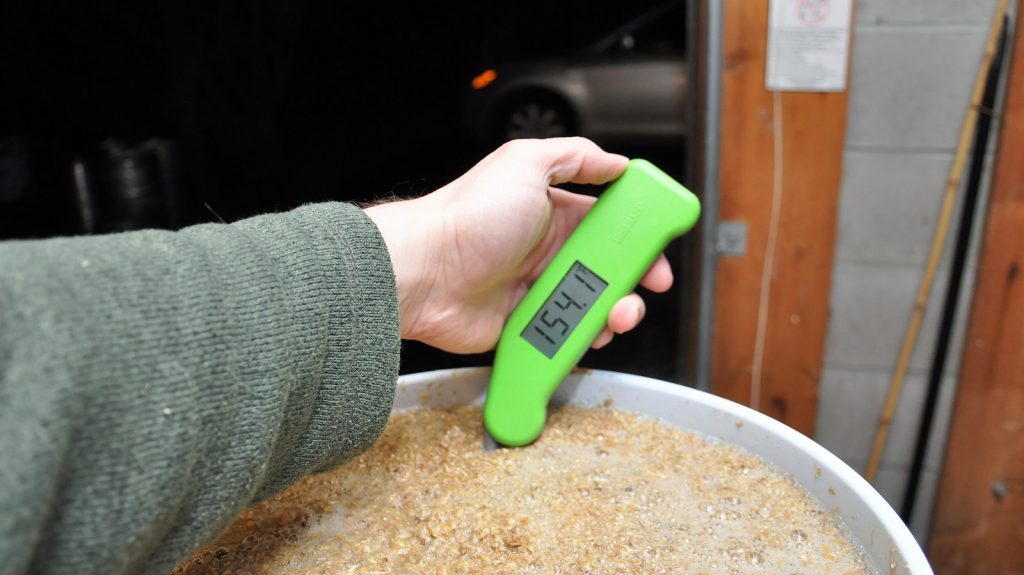
I stole a small sample of sweet wort about 15 minutes into the mash to ensure I’d hit my target mash pH.
I let the mash rest for 60 minutes before performing a batch sparge to collect the full volume of sweet wort. After gently stirring to homogenize, I transferred half of the wort to a new identical boil kettle so that each could be hopped differently. Separated by about 20 minutes, I boiled each batch for 60 minutes, adding hops at the same points listed in the recipe for each.
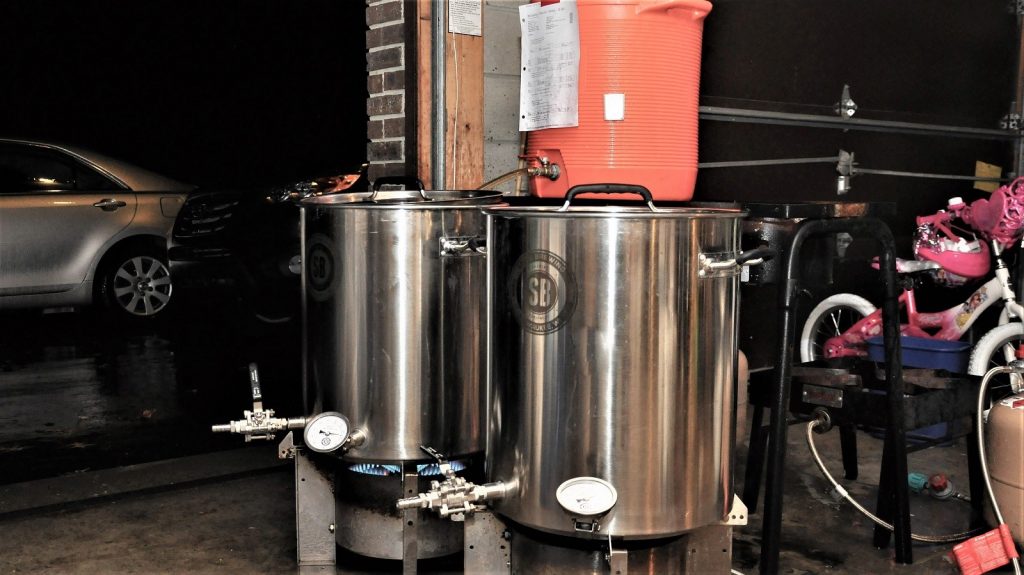
Once the boils were complete, I hastily chilled each wort to just below 150˚F/66˚C, added the whirlpool additions, the proceeded to finish chilling after a 20 minute stand.
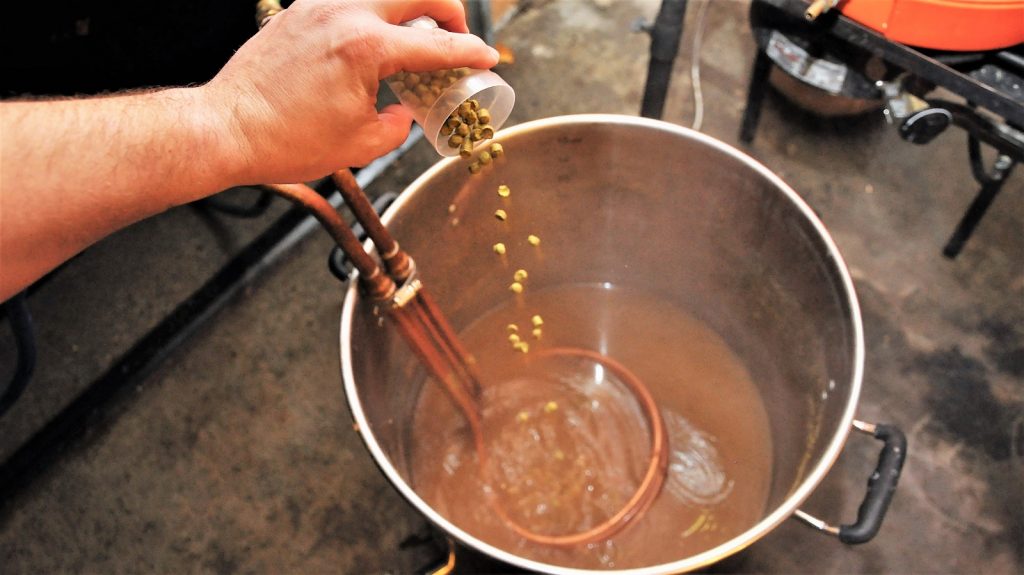
I took hydrometer measurements that confirmed both worts were at my target 1.054 OG, after which I racked equal amounts to separate fermentors.
With the wort sitting at 66°F/19°C, I pitched the yeast and set the temperature controller to 68°F/20°C. Visible airlock activity was observed the following day and I let the beers continue fermenting at this temperature for 5 days before adding the dry hop charge and raising the temperature to 71°F/22°C to encourage complete attenuation. Signs of activity were all but absent another week later so I took hydrometer measurements to confirm FG had been reached.
The beers were cold crashed overnight then pressure-transferred into their own kegs.
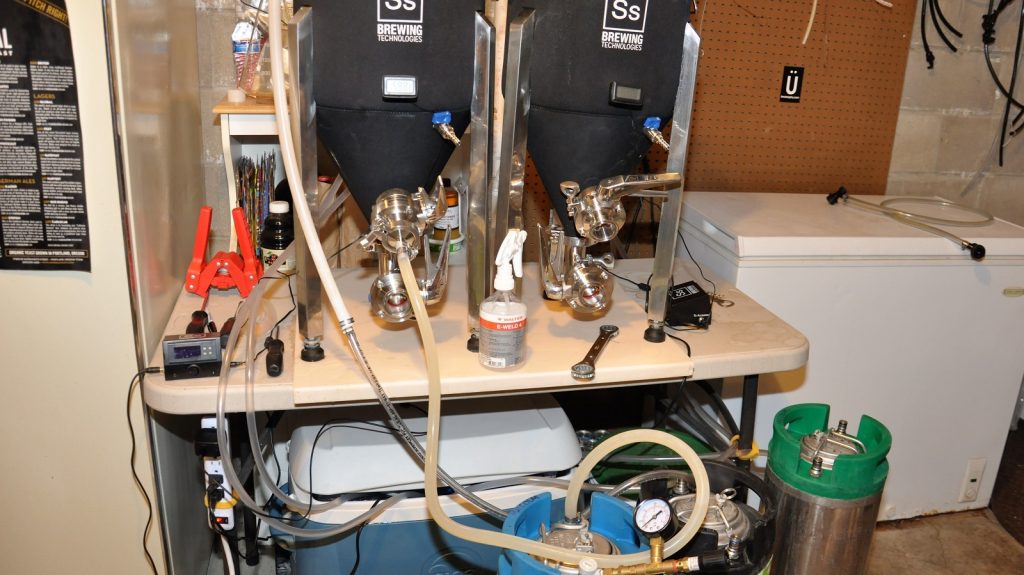
I fined with gelatin in the kegs then burst carbonated overnight before reducing the CO2 to serving pressure and letting the beers condition for a few more days. Equally carbonated when it came time to collect data, I found it odd that the Galaxy beer was visibly more clear than its Mosaic hopped counterpart.
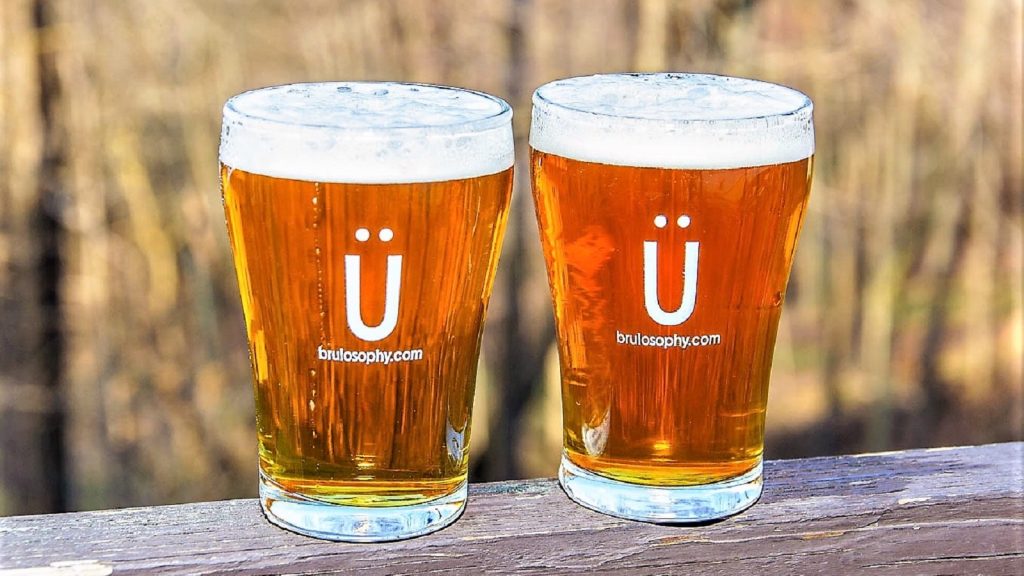
| RESULTS |
A total of 38 people of varying levels of experience participated in this xBmt, each served 1 sample of the Galaxy hopped beer and 2 samples of the Mosaic hopped beer then asked to identify the one that was unique. With this many participants, 19 would have had to correctly identify the Galaxy hopped beer as being different in order to reach statistical significance, though only 17 correct selections were made (p<0.05; p=0.095), indicating tasters in this xBmt were not able to reliably distinguish a Galaxy single-hop beer from a similar beer hopped only with Mosaic.
To satisfy curious minds, we’ll share the arguably meaningless preference data collected from the 17 participants who were correct on the triangle test. The Mosaic hopped beer was preferred by 8 of the tasters while the Galaxy hopped beer was preferred by 4, the same number who said they had no preference despite perceiving a difference; only 1 participant reported perceiving no difference between the beers.
My Impressions: Despite how different they looked, I was unable to tell these beers apart on my first triangle test attempt, they both were very aromatic with bold fruit character. However, fully aware of what to look for and paying ultra close attention, I was able identify the odd-beer-out in subsequent trials attempted a few days later. While I didn’t initially detect the strong resinous character in the Mosaic beer the participants of The Hop Chronicles noted, I did perceive more of it along with a moderate floral component as the beer conditioned. On the other hand, I experienced the beer hopped exclusively with Galaxy as having notes of tangerine with a strong stone fruit character giving it an impression of sweetness that was a bit much for my liking. Both beers were good, but the complexity of the one hopped with Mosaic won my preference over the bold intensity of the Galaxy hopped beer.
| DISCUSSION |
With the demand for high oil content hops possessing super pungent fruit character that will carry through to the finished beer, I suppose it’s not terribly shocking that beers made solely with either Galaxy or Mosaic, varieties developed precisely for this purpose, weren’t different enough to make them reliably distinguishable by a panel of blind tasters. Indeed, the hops are different, for example, Mosaic has a lower total oil content than Galaxy, which can have upwards of 40% more Myrcene than Mosaic. Not to mention, one is grown strictly in Australia while the other is only grown on American soil.
It’s plausible my general ability to tell these beers apart when participants were unable to reliably do so was due, at least in part, to my intimate knowledge about the variable. Regardless, while I preferred Mosaic hopped batch over the Galaxy beer, the real winner emerged when I blended equal amounts of either beer together. It was so good, in fact, I ended up transferring a gallon of each to its own 3 gallon keg– 2 brews, 3 beers! Combining the bold intensity and sweet fruitiness of Galaxy with the more complex character I got from the Mosaic beer produced a delicious and easy-to-drink Pale Ale.
I remain curious as to the cause of the haziness in the Mosaic beer and hypothesize it has something to do with the difference in overall oil content, only because both batches were treated identically and neither presented with signs of contamination. Regardless, and despite my preference for the Mosaic beer, both of these varieties are great in their own right and are certainly deserving of the praise they receive.
If you have any experience using either of these hops or have thoughts on this xBmt, please share them in the comments section below!
Support Brülosophy In Style!
All designs are available in various colors and sizes on Amazon!
Follow Brülosophy on:
FACEBOOK | TWITTER | INSTAGRAM
If you enjoy this stuff and feel compelled to support Brulosophy.com, please check out the Support Us page for details on how you can very easily do so. Thanks!

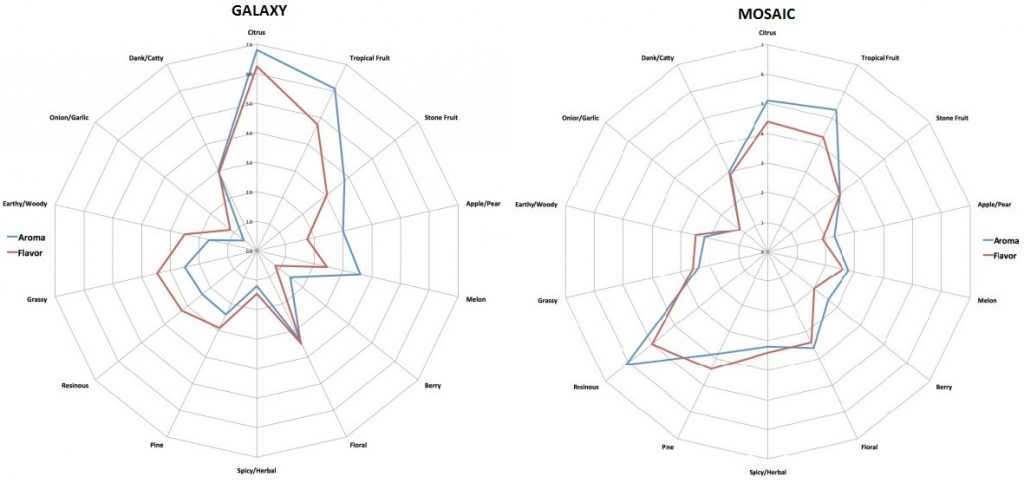
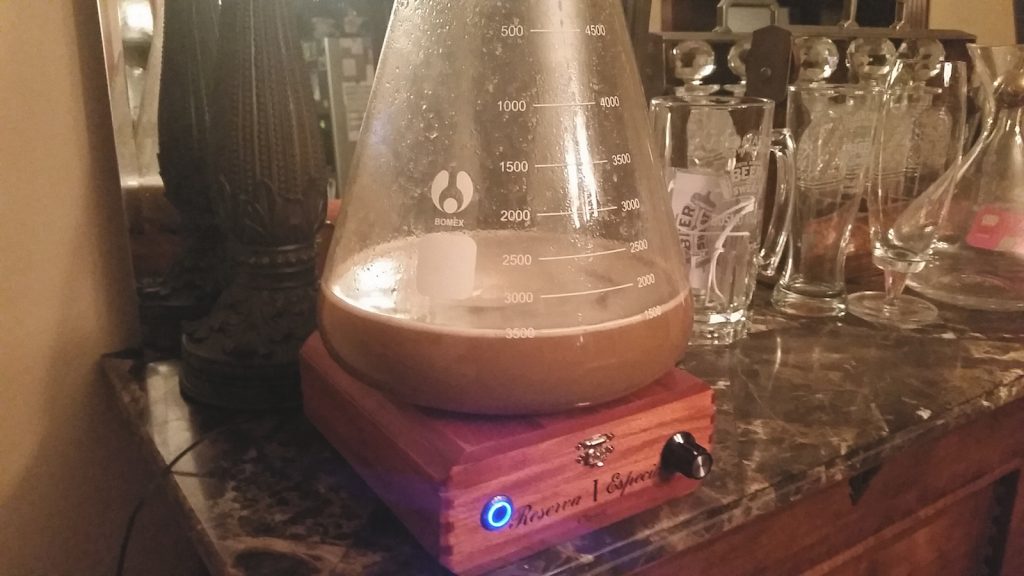
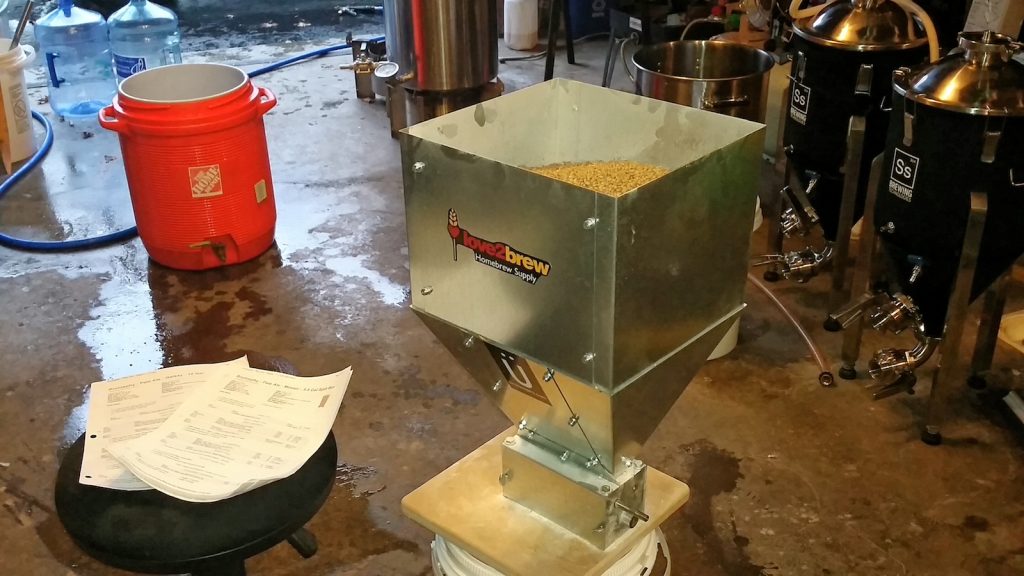

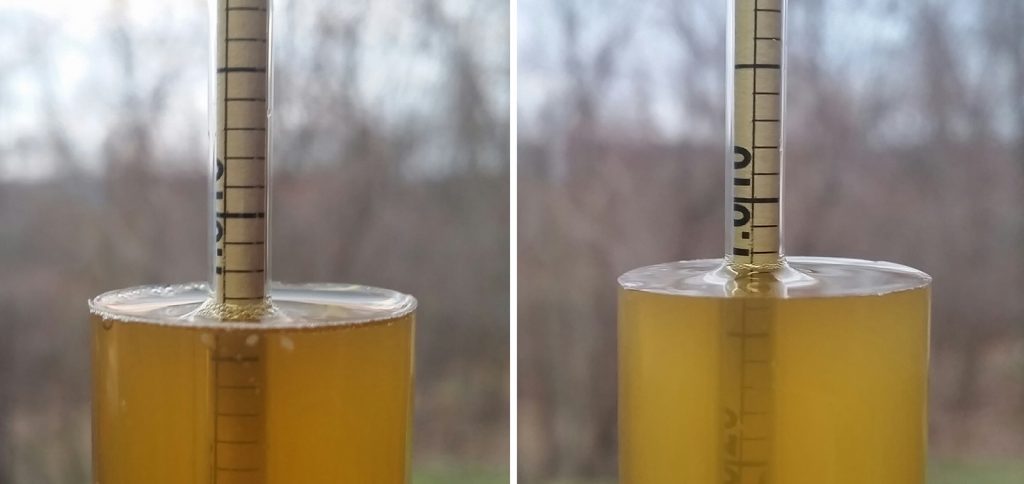










28 thoughts on “exBEERiment | Hop Comparison: Galaxy vs. Mosaic In An American Pale Ale”
Interesting as usual. Thanks!
You mention whirlpool addition in the process but there is no such addition in the recipe. Can you clarify? Thanks.
Interesting results, I might do this myself! Out of curiosity, I’ve always found Mosaic and Galaxy to be very different when whirlpooling them, why did you not whirlpool? I think if I do it I absolutely will.
I did. Kinda. It was a 20 min steep. We had a mix up via beer xml. Marshall fixed it I think. Please recheck.
very cool. i was just thinking of doing a 1:1 mosaic:galaxy ipa.
Do it. Great combo.
It was meant to be a 20 min steep vs 20 min boil. We had a mix up via beer xml. Marshall fixed it I think. Please recheck
Thanks for the feedback! We love our readers.
Just did a mosaic / galaxy neipa with magnum for bittering and centennial in the middle. 2nd favorite ipa i have ever made.
Sounds like a winner to me.
What was the first?
Hi, Malcolm.
Don´t you get some nasties by using gelatine in the keg?
Thanks
Sorta. The “nasties” get heavy and stay put in bottom of keg. So I get crystal clear beer.
I maybe get 2 pints of murky beer. Then clear. Takes 24 to 36 hrs on avg.
Do your heaviest-dry-hopped IPAs clear within 48 hours (to the extent they ever will?)
Seem to get 90% there (pulled that % out of thin air -lol) in 48 hrs. And reach as bright as they will be by a week if held very cold.
Slightly off-topic but how was this grainbill? The colour looks amazing. How did it balance with the hops?
I love it. I will be using often.
May try dropping the C45 altogether and replace with Victory see if I miss the small % of C Malt.
It’s interesting to see that you do the whirlpool addition after knocking down the beer to 66c. It is to extract less alpha acids but does it make a difference? Have you done a side by side for whirlpool addition at knockout near boiling and the 66c method?
We have performed at least 2 xBmts addressing “hop stand”.
If you go to brulosophy.com, under the xBmt tab you can enter a search term. Try “hopstand”.
Here are links –
https://brulosophy.com/2016/05/02/hop-stand-vs-20-minute-boil-addition-exbeeriment-results/
https://brulosophy.com/2016/02/01/the-hop-stand-hot-vs-chilled-wort-exbeeriment-results/
I love your constant and VERY regular posts. Maybe it’s just the way i approach single hop beers but i find that to get a good feel for the single variety you need to be a bit more heavy handed on the doses to make them pop with their own attitude. I would triple the amounts you used on the whirlpool and dry hop amounts. Maybe that cold be a future experiment, signal hop
beer with the amounts are 3 times greater in the second brew and see if the participants can tell if its the same hop only more intense. Just my 2 cents.
We are in contact with a few hop growers and have been taking input to align our methods more with what the industry does for hop evaluation. We haven’t made wholesale changes yet but we are getting closer.
Thanks for the feedback!
https://brulosophy.com/2015/09/21/dry-hop-quantity-a-little-vs-a-lot-exbeeriment-results/
I don’t understand how the statistical analysis is very relevant in this case. If 17 could tell a difference, should you not have retested them to see if they can repeat this? I don’t think the data backs up the conclusion of not being able to “reliably distinguish” one hop from another
Chance is accounted for via our testing method. We do not go back and perform these tests with the same people on the same beers.
Per the result, based on sample size, a blind triangle, and our p value, the data does indicate our panelists were unable to reliably distinguish the unique beer.
I was thinking the whole time reading this how good these hops go together. I make a brew that does just this and is a favourite amongst my friends. Then I get to the “discussion” and you do this.
I wonder if the haze could be from two different pelletizing machines and the associated variance in settings of each process?
I am truly at a loss for explanation and left with only guesses.
My first go to was the total oil contribution per unit weight, but – per YCH Hops – Galaxy is higher, 3 – 5 mL/100g, as comp’d to Mosaic at 0.8 – 3 mL/100g.
Question! Where are you getting these awesome radar graphs for your hop flavor profiles? I’d love to make use of them to plan out hop combinations
We generated the graphic from the compiled results reported via a Google form.
The Google form is shared with the panelists. They rate flavor and aroma attributes on a 0-9 scale. The results look like the radar graph or spider Web graph.
Would you be willIng to share your form and other graphs?